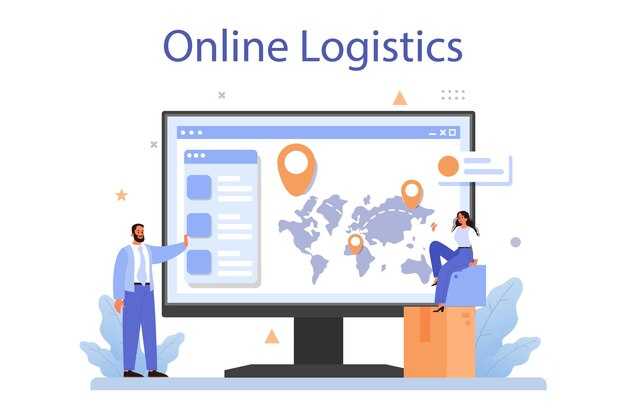Carrier registration on a freight marketplace is the gateway to a digital network of shippers, brokers, and freight opportunities. This practical guide provides clear, step-by-step instructions to onboard a carrier quickly, verify credentials, and maintain compliance over time. You will learn what documents to prepare, how to submit them, and which checks marketplaces perform to protect both carriers and shippers.
Prerequisites include a legal business entity and the necessary authority. Have your USDOT és MC numbers, proof of insurance with carrier qualification limits, a current insurance certificate, and a government-issued business registration. Prepare up-to-date fleet information, such as equipment type, trailer counts, and operating regions. Ensure payment and tax details are ready for onboarding and settlement.
Onboarding steps are designed to be linear and fast. Create or sign into your carrier account, enter company details, and link required documents. Upload certifications, insurance certificates, authority documents, and a W-9 if required. Complete safety and compliance checks, configure payment settings, and attach fleet and driver information to enable seamless load matching.
A verification and compliance process typically includes government-number validation, insurance verification, and safety record checks. Marketplaces may request additional documents such as a BOC-3 form, UCR registration, or proof of active authority. Expect a review period, and be prepared to provide quick clarifications or replacements if any document fails to meet requirements.
Best practices for a smooth registration experience include keeping all documents current, maintaining accurate equipment details, and ensuring contact information is always up to date. Use a consistent carrier name and physical address, monitor notifications, and reply promptly to requests from the marketplace. Regularly audit your profile to reflect new permits, insurance renewals, or changes in authority.
After approval, maintain ongoing compliance by updating documents before expiry, tracking safety scores, and maintaining performance metrics. A well-maintained profile increases bid acceptance, reduces onboarding delays, and strengthens relationships with shippers on the platform.
Document Requirements and Uploads: licenses, proof of insurance, MC/DOT, and business registration in the portal

To complete carrier registration in the portal, upload documentation that verifies your operating authority, insurance coverage, and corporate status: FMCSA authority details (MC number and USDOT number) as published on your registration; a current Certificate of Insurance (COI) showing liability and cargo coverages with policy numbers, issuing insurer, insured name, and the policy’s effective and expiration dates; your operating authority documents or motor carrier permit if applicable; official business registration papers such as Articles of Organization or Certificate of Incorporation, state business license or registration, and EIN confirmation; and any additional registrations required by the states you operate in. The legal entity name on all documents must match the name on your portal profile.
File formats and quality: PDFs are preferred for all documents; accepted image formats include JPG/JPEG and PNG; ensure each file is legible with clear text, no glare, and complete edges. Do not submit cropped or heavily redacted documents. Keep each file under the portal’s maximum size per document (commonly 5–10 MB). If a file is large, compress or split into multiple pages while maintaining legibility.
Upload process and metadata: In the portal, go to your Carrier Profile > Documents, select the appropriate document category (MC/DOT authority, Insurance COI, Business Registration, or Licenses), click Upload, attach the file, and enter required metadata such as policy number, issuing state, insurer name, expiration date, and your legal entity name. Use the exact names as on the original documents to avoid mismatches. Repeat for each required document until all fields are complete.
Validation and status: Submissions are reviewed by the compliance team. Expect a 1–3 business day turnaround for initial validation; the status will display as Pending, Approved, or Rejected. If information is missing or a document is invalid, you will receive a Request for Resubmission with specific notes. Address the notes, re-upload the corrected file(s), and resubmit promptly to avoid delays in profile activation.
Expiration, renewal, and ongoing maintenance: COIs and regulatory documents have expiration dates that must be current. Upload updated COIs and new license/authority documents before expiration; once refreshed, the portal will re-validate the updated files. Maintain a renewal schedule and set portal reminders so your profile remains compliant and eligible for quotes and loads.
Tips and common issues: Ensure the legal entity name matches across all documents and the portal profile; confirm MC and USDOT numbers are active and correspond to your company; avoid using personal or old business names; ensure insurance coverage types and limits meet marketplace requirements; ensure all documents are complete, legible, and free of sensitive data beyond what is necessary for verification.
Security and privacy: The portal stores only information needed for verification and payments. Upload only documents from official sources and avoid exposing unnecessary sensitive details in non-required fields. Use a secure connection and do not share login credentials or export files to untrusted devices.
Checklist before submission: MC/DOT numbers present and active; COI with current dates and required coverages; Business registration docs (articles/incorporation, license, EIN); the legal entity name matches the profile; document formats and file sizes comply with portal limits; expiration dates clearly stated and will not lapse during review.
Identity and Legal Entity Verification: preparing company data, tax IDs, and operating authority for approval
Identity and Legal Entity Verification is the prerequisite that confirms the legitimacy and operational readiness of a carrier on a freight marketplace. The process ensures the company, its owners, and its operating authority are accurately represented and verifiable, reducing risk for shippers and brokers and speeding onboarding.
Prepare core company data before submission. Capture the exact legal name as registered with the state, any trade names (DBA), jurisdiction of formation, and entity type (LLC, corporation, partnership, sole proprietorship). Include formation or incorporation date, the official registered address, and a dedicated mailing address if different. Provide a primary business phone number, a general email address, and a company website if available. Confirm who has authority to sign filings and bind the company on contracts.
Tax identifiers must be current and match the company name on all documents. Provide the federal tax ID (EIN in the United States) or equivalent national tax ID, VAT/GST numbers for applicable jurisdictions, and any state tax registrations if required. Include forms or confirmations such as W-9 (or W-8BEN-E for non-U.S. entities) to verify tax status. Ensure the tax ID aligns with the legal name and entity type and that it is registered to the same business address used in the entity documents.
Operating authority details are required for legitimate freight operations. For carriers in the United States, supply the USDOT number and Motor Carrier (MC) number if applicable, along with the authority type (Common Carrier, Contract Carrier, or private). Confirm that the authority is active and in good standing, and note any safety or compliance status as requested by the marketplace.
Documentation to attach typically includes: Articles of Incorporation or Organization; Certificate of Good Standing; Operating Agreement (for LLC) or Bylaws (for corporations); DBA or fictitious name registration; state business license; current proof of address; bank or utility statements for address verification; insurance declarations pages for required coverages (general liability, auto liability, cargo insurance) with minimums specified by the platform; copies of the insurance certificates; BOC-3 designation (where required) for nationwide service; and documents proving signatory authority (corporate resolutions or equivalent) showing who can bind the company on contracts.
Ensure consistency across all documents. The legal name, entity type, and address must match exactly on every submission. Prepare high-quality copies in widely accepted formats (PDF or image files) and verify that dates are current and not expired. For foreign entities, provide translations where necessary and ensure tax and registration numbers conform to local regulatory requirements.
After submission, the platform typically reviews the information to verify authenticity and regulatory compliance. If further documentation is requested, respond promptly to avoid onboarding delays. Maintain an auditable folder with all originals and updated copies to facilitate renewals or changes in ownership, address, or authority status.
Submission Process, Status Tracking, and Issue Resolution: step-by-step flow from start to confirmation and common pitfalls
Step 1: Prepare documentation and eligibility. Gather the carrier’s legal entity name, operating authority (DOT/MC numbers), current insurance certificates, motor carrier credentials, safety records if required, W-9, and proof of authority. Verify that the documents are current, legible, and match the carrier’s registered legal name and address. Prepare a digital copy set in common formats (PDF, PNG, JPEG) and ensure expirations align with the submission window.
Step 2: Access the freight marketplace portal and initiate registration. Log in to the carrier account or create one if new, navigate to the Carrier Registration section, and start a new submission. Read and accept the platform’s terms for carrier onboarding, and note the submission reference number provided for tracking.
Step 3: Complete profile and service scope. Enter core company details (legal name, DBA, physical address, contact person, and primary phone/email). Select service types offered (e.g., full truckload, LTL, hazmat, refrigerated), regions served, fleet size, and whether you operate owner-operators or company drivers. Ensure consistency with the documents uploaded.
Step 4: Upload documents and compliance data. Upload the required documents in their correct sections: operating authority numbers, proof of insurance (with carrier name matching your legal entity), insurance expiration dates, your DOT number, MC number, and any state registrations. Attach certificates that name your carrier correctly and include coverage limits. Ensure file names are clear and scans readable.
Step 5: Submit for review and await automatic checks. After submission, the system performs required-field validation and starts the verification workflow, which may include automated checks and manual review by the onboarding team. You will receive a submission reference and status updates in the dashboard and by email or in-app notifications.
Step 6: Status tracking during review. Common statuses include Submitted, Under Review, Requires Information, Pending Documents, Approved, and Rejected. Check the dashboard frequently for status changes; enable notifications to receive alerts about requests for additional data or clarifications. Some verifications may require contact from the onboarding team or external authorities, which can introduce delays.
Step 7: Issue resolution process. If the system or reviewers flag an issue, you will receive a description of the problem and a deadline. Typical actions: upload corrected or missing documents, update incorrect data (such as mismatched legal name or authority numbers), provide additional evidence of insurance coverage, or supply explanations for discrepancies. If documents expire, re-upload fresh certificates. If you disagree with a rejection, request clarification or escalate to a supervisor via the supported channels in the portal.
Step 8: Confirmation and activation. When all checks pass, you receive final approval and the carrier profile becomes Active. Your fleet can be selected by shippers, and your onboarding signals are visible in the marketplace. If approval fails, review the rejection reason, address the deficiencies, and re-submit within the allowed window or initiate escalation per the platform’s policy.
Common pitfalls and best practices. Avoid mismatches between the legal name on documents and the profile, ensure insurance certificates name the correct legal entity, keep documents up to date, verify expiration dates before submission, provide complete fleet and service details, adhere to required document formats, and monitor status updates promptly to prevent stall or expiry of the review window.

 Carrier Registration on Freight Marketplace Practical Guide">
Carrier Registration on Freight Marketplace Practical Guide">
